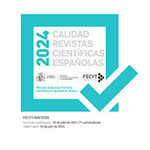Un château d’or pour horizon.
Héraldique, épigraphie et mémoire lignagère à Toulouse : les Castelnau, XIIe-XIIIe siècle
Abstract
Epigraphy offers a documentary support which can prove rich in the field of heraldry, particularly in the early days of its diffusion, at the turn of the 13th century. Certainly, traces of polychromy are often lacking due to the effects of time, but cross-checking with other historical sources makes it possible to propose an identification of the sponsor of the lapidary inscription. When the file is made up of several witnesses living within a narrow chronological interval, certain conclusions can be deduced about heraldic practices and uses in a given area. The proposed case study concerns a chivalric lineage residing in Toulouse, the Castelnau, some members of which are part of the entourage of the count’s dynasty of the Raimondins. This proximity reflects the heraldic influence which emanated from the princely authorities and which affected families of high-ranking urban knights in the 1180s. In the present case, the role of wives and mothers deserves to be amply underlined.
Downloads
Article download
License
In order to support the global exchange of knowledge, the journal Eikon Imago is allowing unrestricted access to its content as from its publication in this electronic edition, and as such it is an open-access journal. The originals published in this journal are the property of the Complutense University of Madrid and any reproduction thereof in full or in part must cite the source. All content is distributed under a Creative Commons Attribution 4.0 use and distribution licence (CC BY 4.0). This circumstance must be expressly stated in these terms where necessary. You can view the summary and the complete legal text of the licence.











